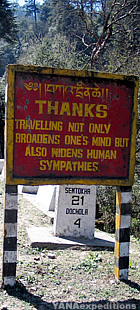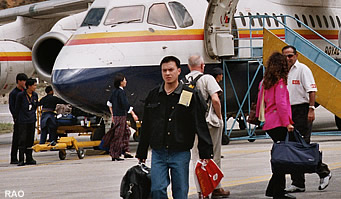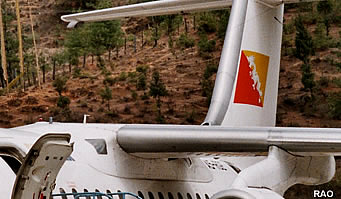It was an increase of about 48 percent from 2004, when 9,259 tourists had visited Bhutan and the sector had earned US $ 12.45 million, tourism officials said. According to tourism officials and tour operators, the success was a combination of many things like the increase in the number of travellers globally, increase in Drukair's capacity with the two new aircraft, and marketing done through international travel writers and international tourism fairs.
While professionalism was still wanting in the industry it was developing, tour operators said. Both the government and private sector were taking initiatives in promoting professionalism in the industry. The hotel and tourism management institute, funded by the Austrian government, will be established by 2008, tourism officials said. Tour operators also bring in experts to train their staff. The year also saw the drafting of the tourism master plan, tourism law and tour operators' regulation in consultation with various stakeholders of the industry like hoteliers, tour operator, travel agents and handicraft dealers. The private sector in general appreciated the development initiatives taken by the government but the views differed on the new liberal pricing policy. The policy prescribes a tariff of US $ 100 royalty a day and a liberal package breaking away from the present all-inclusive package. Some tour operators said that the new policy would reduce their profits that were already affected by inflation. Others said it was a good initiative because if the government lost control over the industry it would be driven by profits alone. The director general of the tourism department, Lhatu Wangchuk, said that the development of the sector was largely being done by the department which otherwise should be an authority involved only in policy making, marketing and monitoring. "There are only a handful of people who invest in the industry in terms of both infrastructure and human resource," he said. The years ahead looked promising for the industry and, according to Lhatu Wangchuk, a target of 15,000 tourists by the end of the Ninth Plan period could be achieved a year earlier. "But this would mean catching up with infrastructure, manpower, guides, hotels, hotel staff and so on," he said, adding that there were many new hotels coming up in the country, including in the eastern dzongkhags. However, he said, that the industry was very vulnerable and if the industry faced problems like natural disasters or epidemics there was nothing to fall back on. Domestic tourism had not picked up in Bhutan unlike in other countries. In terms of the social and cultural impact of tourism the tshechu festivals, especially in the urban areas of Thimphu and Paro, were getting over-crowded so a surcharge maybe introduced by the department. The department and tour operators are also promoting tshechu festivals in other dzongkhags to break even the pressure. Many tourists, say tour operators, have also started to request for tshechus in other districts apart from Thimphu and Paro tshechus because they had become "modern". Breaking away the seasonality (spring and autumn) of tourism in Bhutan may be possible with the route from Guwahati, India, to Samdrup Jongkhar likely to be opened for tourism this year benefiting the eastern region. According to tourism monitor, 2004, the tourist impact on Thimphu and Paro was the highest with over 24 percent of the total nights spent by tourists in these dzongkhags. Zhemgang and Lhuentse received no tourists while Haa and Gasa had about one percent.
|






